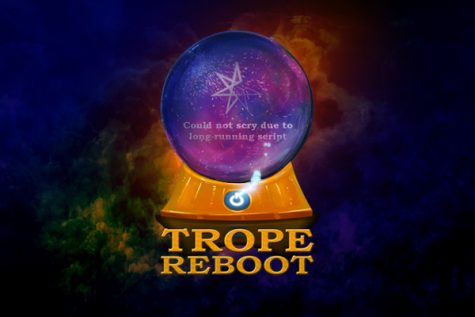Devor submitted a new blog post:
Elemental Magic: Trope Reboot
by Brian DeLeonard

Sometimes magic systems fail. Instead of wonder they cause confusion. Instead of building conflict they create plot holes. And instead of deepening our characters’ struggles they enable the dreaded deus ex machina. But we can avoid these issues by turning to a classic, well defined system.
It’s a trope to streamline spells. Let’s reboot Elemental Magic.
Mastery of the Elemental Arts
Most magic systems deliver the wonder. Fireballs, incantations, glowing wands and old people full of wisdom help to build a sense of mystery and power over the impossible. The arcane arts break that impossible boundary and open the door to magic without limits.
So why can’t they solve the plot already?
Magic sometimes does too much. But an elemental magic system tosses out mastery of the arcane arts, whatever that means, in favor of an elemental throughline. Earth, fire, wind and water – once believed by alchemists to lead us to the elixir of life – have always felt like magic. And in an elemental system, each of those elements, and often others, becomes a magic system of its own.
But alchemy wasn’t about magic. Alchemy, with its elements, behaved like science.
And so do elemental magic systems.
Fire behaves in a way that we understand. It burns, destroys, shoots out smoke, spreads on its own, and is doused by water. Magic based on an element like fire is a magic...
Continue reading the Original Blog Post.
Elemental Magic: Trope Reboot
by Brian DeLeonard

Sometimes magic systems fail. Instead of wonder they cause confusion. Instead of building conflict they create plot holes. And instead of deepening our characters’ struggles they enable the dreaded deus ex machina. But we can avoid these issues by turning to a classic, well defined system.
It’s a trope to streamline spells. Let’s reboot Elemental Magic.
Mastery of the Elemental Arts
Most magic systems deliver the wonder. Fireballs, incantations, glowing wands and old people full of wisdom help to build a sense of mystery and power over the impossible. The arcane arts break that impossible boundary and open the door to magic without limits.
So why can’t they solve the plot already?
Magic sometimes does too much. But an elemental magic system tosses out mastery of the arcane arts, whatever that means, in favor of an elemental throughline. Earth, fire, wind and water – once believed by alchemists to lead us to the elixir of life – have always felt like magic. And in an elemental system, each of those elements, and often others, becomes a magic system of its own.
But alchemy wasn’t about magic. Alchemy, with its elements, behaved like science.
And so do elemental magic systems.
Fire behaves in a way that we understand. It burns, destroys, shoots out smoke, spreads on its own, and is doused by water. Magic based on an element like fire is a magic...
Continue reading the Original Blog Post.

 Inkling
Inkling
 Istar
Istar Scribe
Scribe